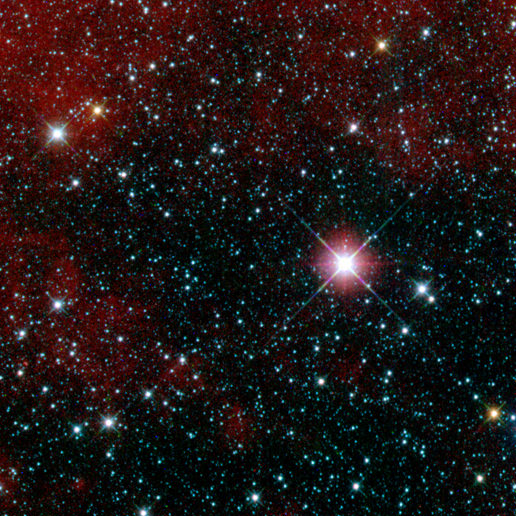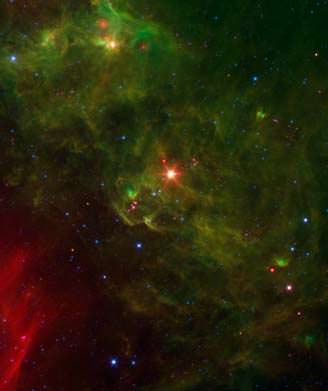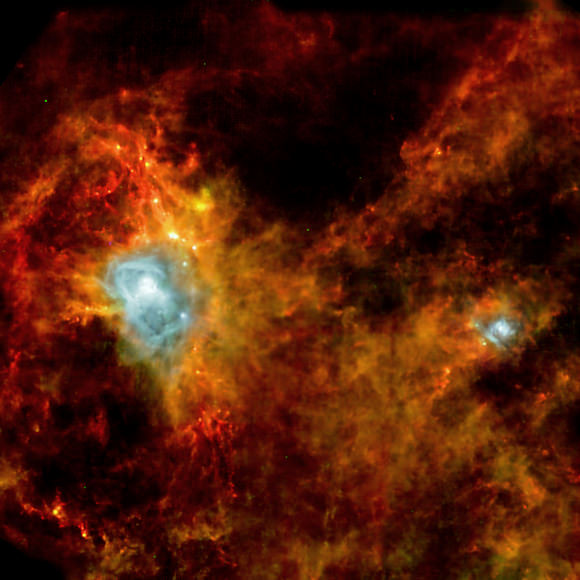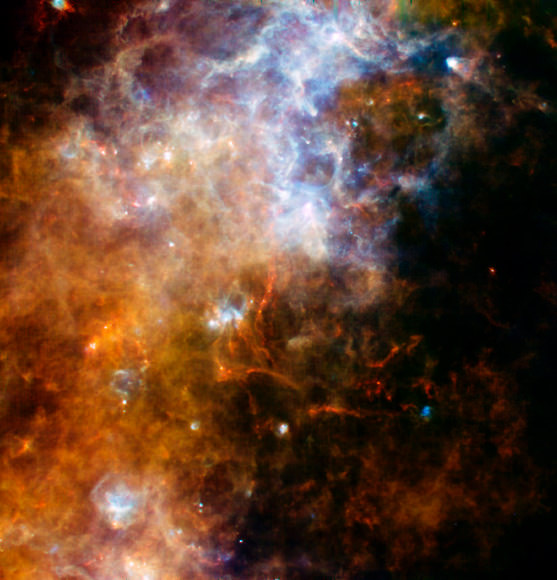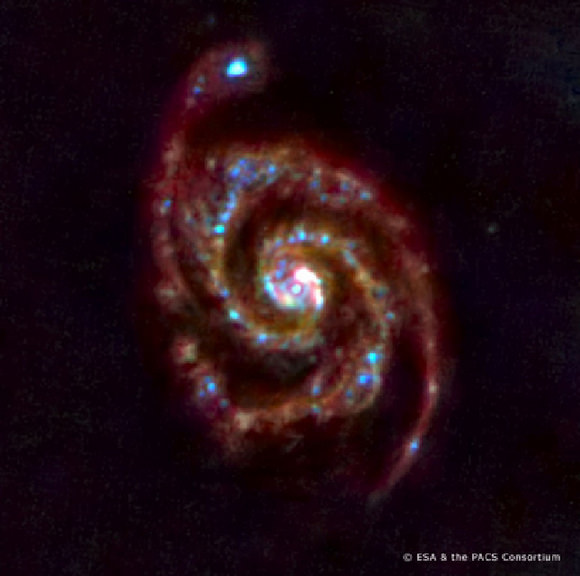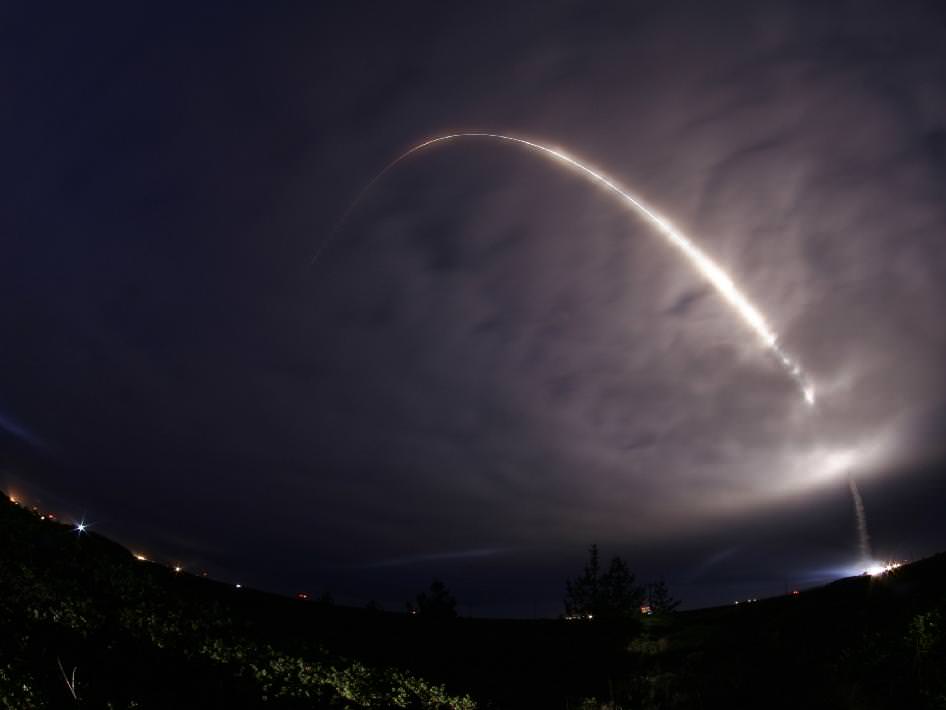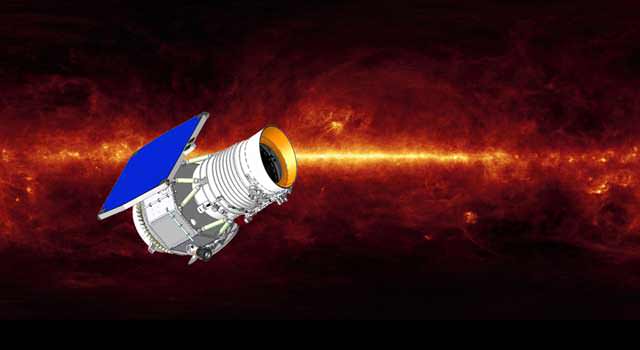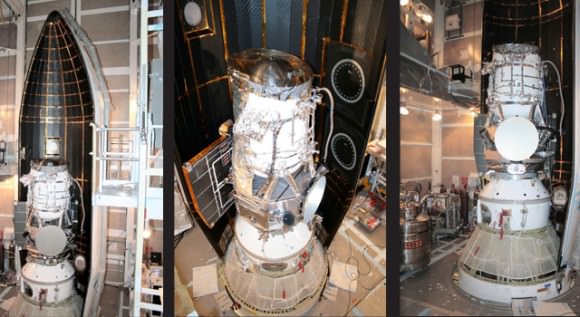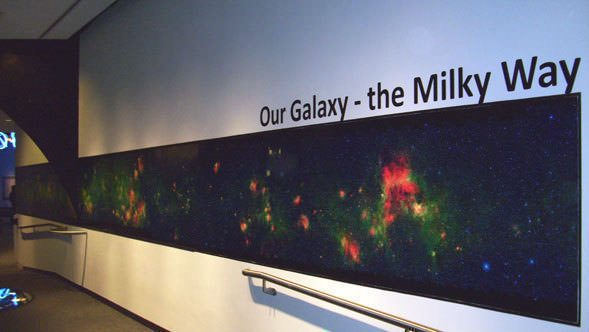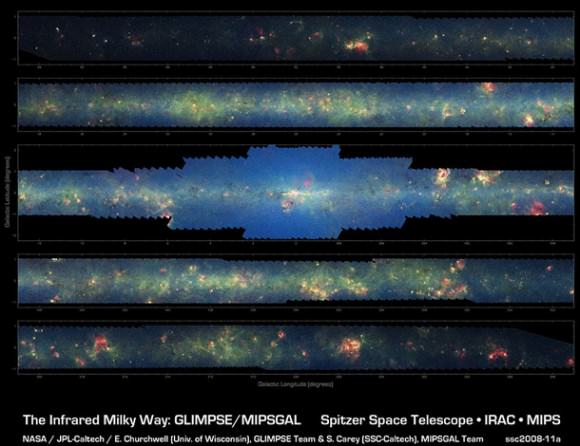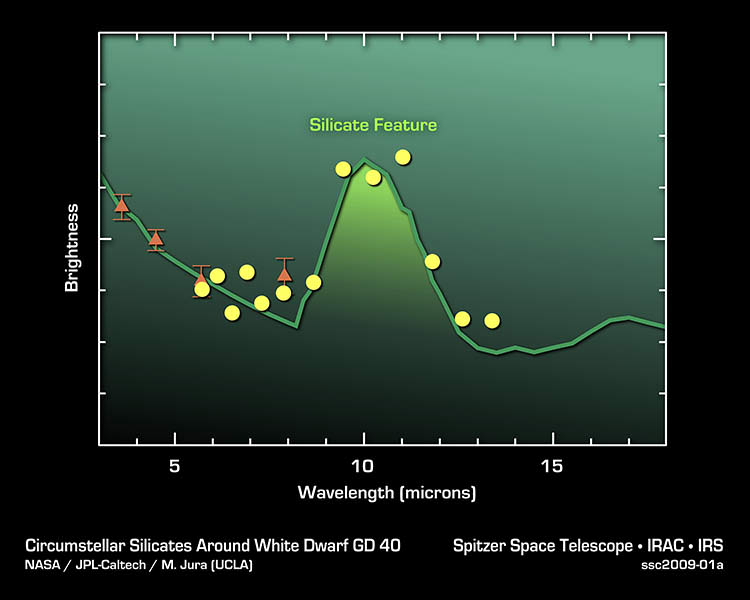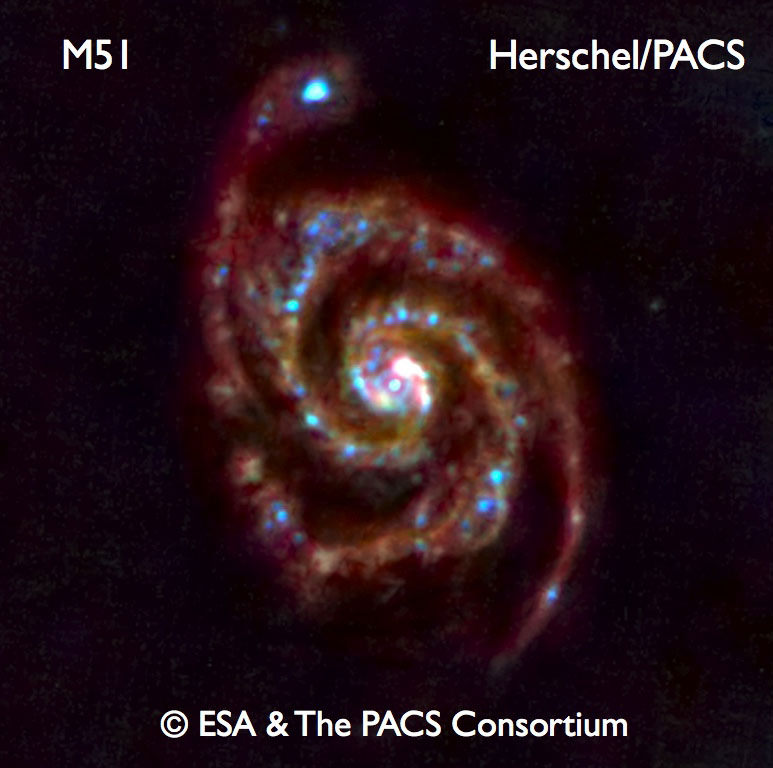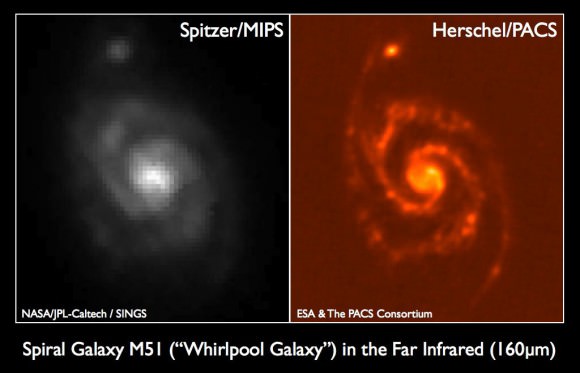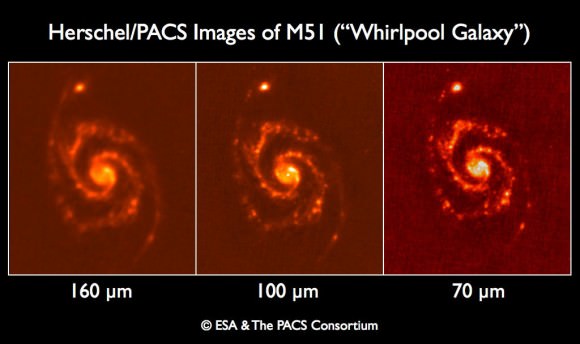An artist’s rendition of colliding planets, the most likely explanation for the warm dust observed around HD 131488. Image credit: Lynette Cook for Gemini Observatory/AURA
Five-hundred light years away, worlds are colliding, and they’re made of nothing we’ve ever seen.
Last week at the 215th American Astronomical Society meeting, UCLA astronomers announced that they had found warm dust – evidence for the violent collision of rocky planets – around a star called HD 131488. The strange thing is, the composition of the dust has little in common with the composition of rocky bodies in any other known system.
“Typically, dust debris around other stars, or our own Sun, is of the olivine, pyroxene, or silica variety, minerals commonly found on Earth,” said Dr. Carl Melis, who led the research as a graduate student at UCLA. “The material orbiting HD 131488 is not one of these dust types. We have yet to identify what species it is – it really appears to be a completely alien type of dust.”
The warm dust in the HD 131488 system is concentrated in an area close to the star, where temperatures are similar to those on Earth. The researchers concluded that the most likely source for dust in that part of the system would be the collision of two rocky planetary bodies. Only five other stars like HD 131488 with dust in their terrestrial planet zone are known. “Interestingly, all five of these stars have ages in the range of 10-30 million years,” Melis said. “This finding indicates that the epoch of final catastrophic mass accretion for terrestrial planets, the likes of which could have resulted in the formation of the Earth-Moon system in our own Solar System, occurs in this narrow age range for stars somewhat more massive than the Sun.”
The team also discovered a unique second dusty region in the outer reaches of the HD 131488 system, comparable to the location of Pluto and other Kuiper Belt objects in our own solar system.
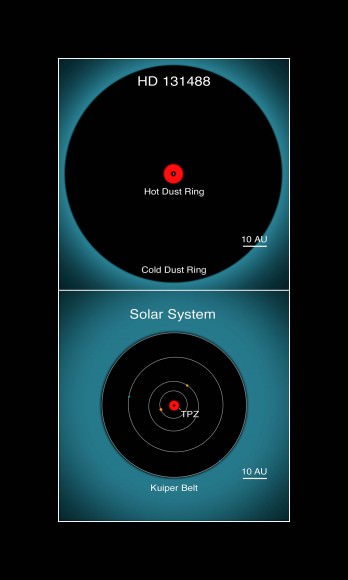
Top: Illustration depicting the location of the warm and cold dust rings in the HD131488 system. Bottom: Comparable regions in our own solar system, with the orbits of the outer planets for scale. Image Credit: Lynette Cook for Gemini Observatory/AURA
“The hot dust almost certainly came from a recent catastrophic collision between two large rocky bodies in HD 131488’s inner planetary system,” Melis said. “The cooler dust, however, is unlikely to have been produced in a catastrophic collision and is probably left over from planet formation that took place farther away from HD 131488.”
“…for some reason stars that have large amounts of orbiting warm dust do not also show evidence for the presence of cold dust. HD 131488 dramatically breaks this pattern,” said Dr. Benjamin Zuckerman, a co-author on the paper and a professor of physics and astronomy at UCLA.
With its unusual dust composition and unique combination of warm and cold dust regions, the HD 131488 system is now under intense scrutiny. Melis and colleagues plan to continue trying to determine the composition of the dust, and will search for other stars with the dusty evidence for planet formation.
Source: Gemini Observatory


